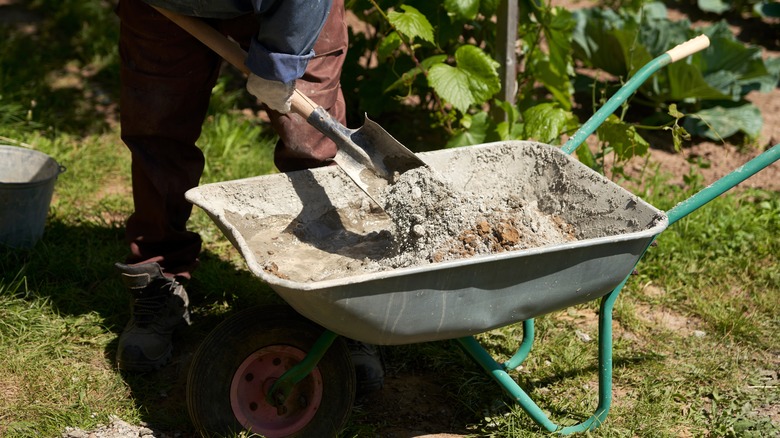Garden paths are more than just functional walkways; they are essential elements of a well-designed outdoor space. These paths not only guide visitors through the garden but also add aesthetic appeal and structure to the landscape. Whether winding through lush greenery or leading to a secluded seating area, garden paths create a sense of invitation and exploration within the outdoor environment. However, installing traditional garden paths can be labor-intensive and time-consuming. Excavating the path, laying a base material, and arranging individual stones or pavers require careful planning and precise execution. For DIY enthusiasts looking for a simpler solution, @shaggy.gardener on TikTok suggests using the QUIKRETE Walk Maker Building Form-Country Stone Pattern reusable plastic mold as an efficient alternative.
One of the primary benefits of garden paths is their ability to define and organize space. By delineating specific routes, paths help prevent people from trampling on delicate plants and keep foot traffic confined to designated areas. Additionally, they offer practical access for maintenance tasks such as watering, weeding, and harvesting, making gardening tasks more manageable and enjoyable. Good thing creating a functional and aesthetic DIY garden path is within easy reach as demonstrated by @shaggy.gardener on TikTok.
Easy garden path creation with the Walk Maker
once I finally did it I realized it was easy #Diy #garden #concrete #diylandscaping #fyp
♬ Lazy Sunday – Official Sound Studio
Watch on TikTok
The QUIKRETE Walk Maker is available at Lowe’s for $29.90. It’s a versatile tool that revolutionizes the process of creating garden paths. Designed in a country stone pattern, this reusable plastic mold allows users to quickly and easily pour concrete into pre-formed molds, resulting in cobblestone-style pathways without the need for complex masonry skills or specialized equipment. Using the Walk Maker is remarkably straightforward. After preparing the desired path area by leveling the ground, simply mix concrete according to the manufacturer’s instructions and pour it into the Walk Maker. Use a concrete margin trowel to consolidate and smoothen the surface of the material. Once the concrete has set, remove the mold to reveal a beautifully textured garden path surface, and repeat until your path is complete.
This innovative system eliminates the need for individually placing and aligning stones, significantly reducing installation time and effort. Additionally, the consistent size and shape of the molded stones ensure a uniform and professional-looking finish, enhancing the overall aesthetic of the garden. According to QUIKRETE, the Walk Maker is available in charcoal, buff, red, brown, and terra cotta colors. Aside from building garden paths, you can also use it for other DIY projects like walkways, patios, and courtyards.
Prepping the area for best results

Preparing the work area is crucial to ensure the longevity and quality of your garden path. First, clear the area where you plan to install your garden path. Remove any debris, rocks, weeds, or plants that might obstruct the path’s layout. Doing this prevents any unevenness that could affect the path’s stability over time. Ensure the ground where you’ll be laying the path is level. Uneven terrain can lead to water pooling or uneven settling of the concrete, which could compromise the path’s integrity. Use a level and a straight edge to check for any dips or slopes, and fill in low spots with compacted soil. To enhance the durability of your garden path, consider adding a base layer of gravel or sand, and compact it thoroughly to create a solid foundation. This base provides stability, improves drainage, and helps prevent cracking over time.
When mixing your concrete for the QUIKRETE Walk Maker, follow the manufacturer’s instructions carefully. Use the correct ratio of water to concrete mix to ensure proper curing and strength. Overly wet or dry concrete can lead to weak spots or cracking, so aim for a consistency that’s easy to work with but not too soupy. Once your DIY garden path is in place, proper maintenance will help extend its lifespan. Regularly sweep the path to remove debris and prevent it from becoming slippery. Additionally, consider applying a concrete sealer to protect it from moisture, UV rays, and stains.